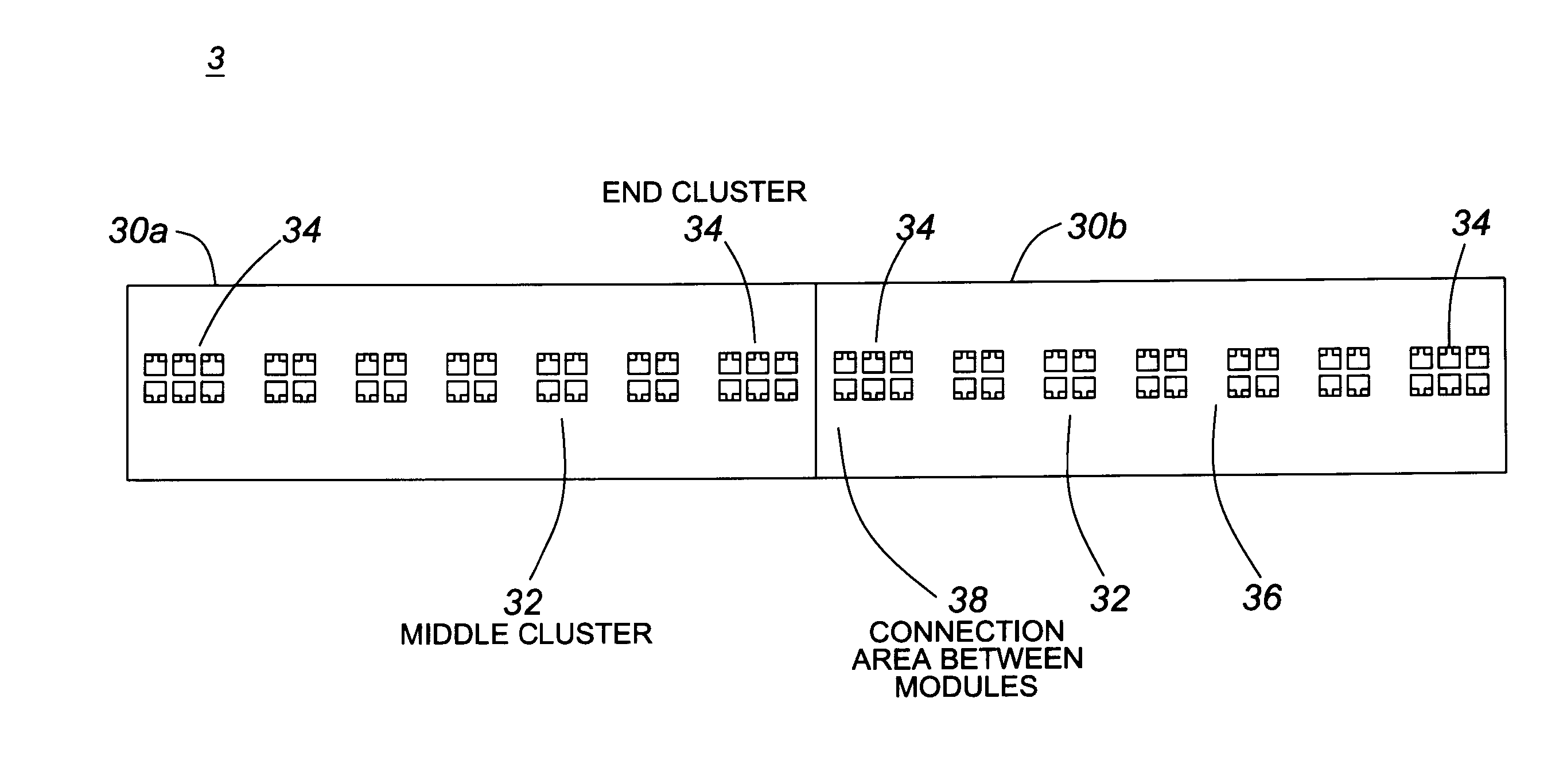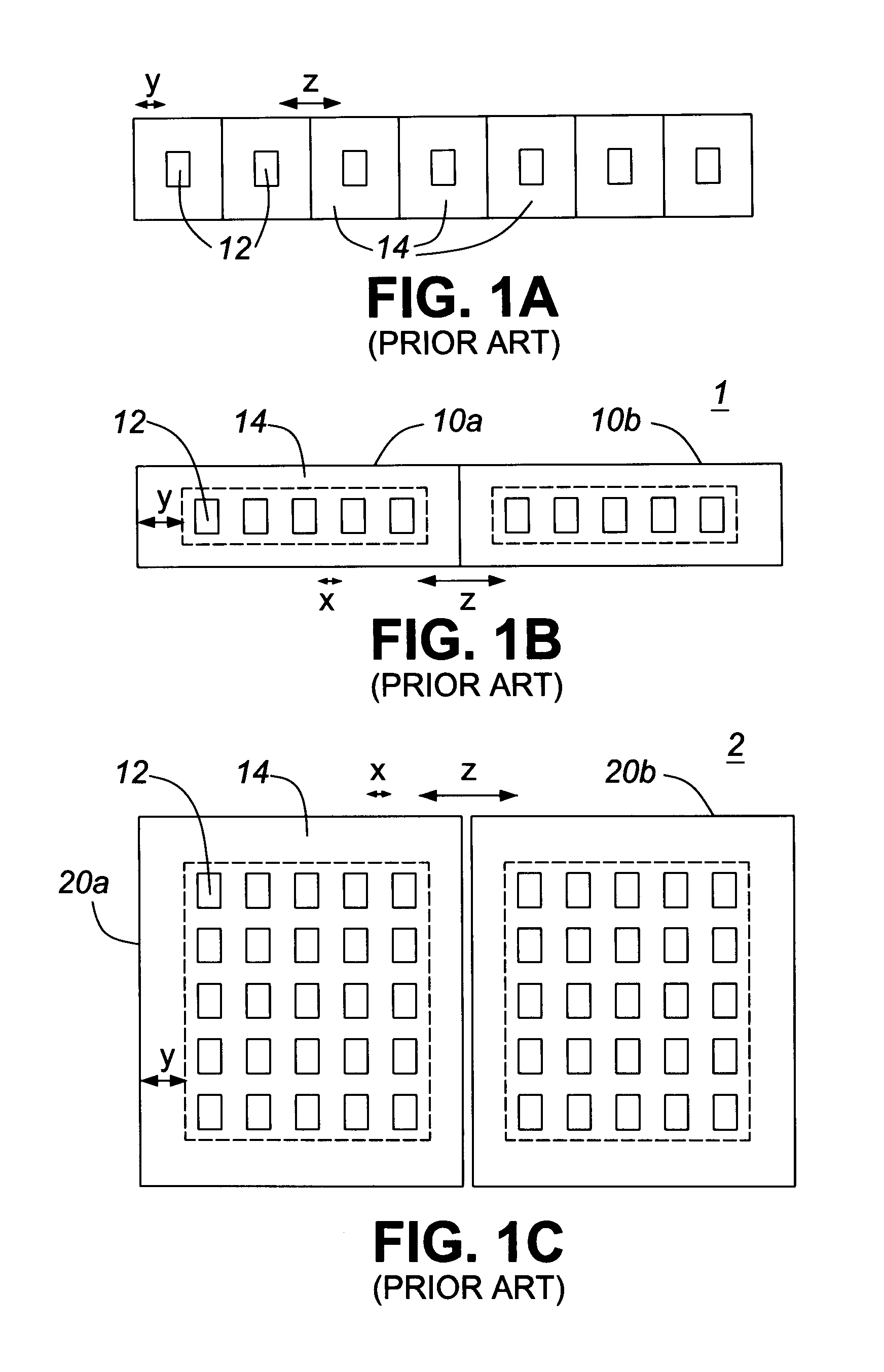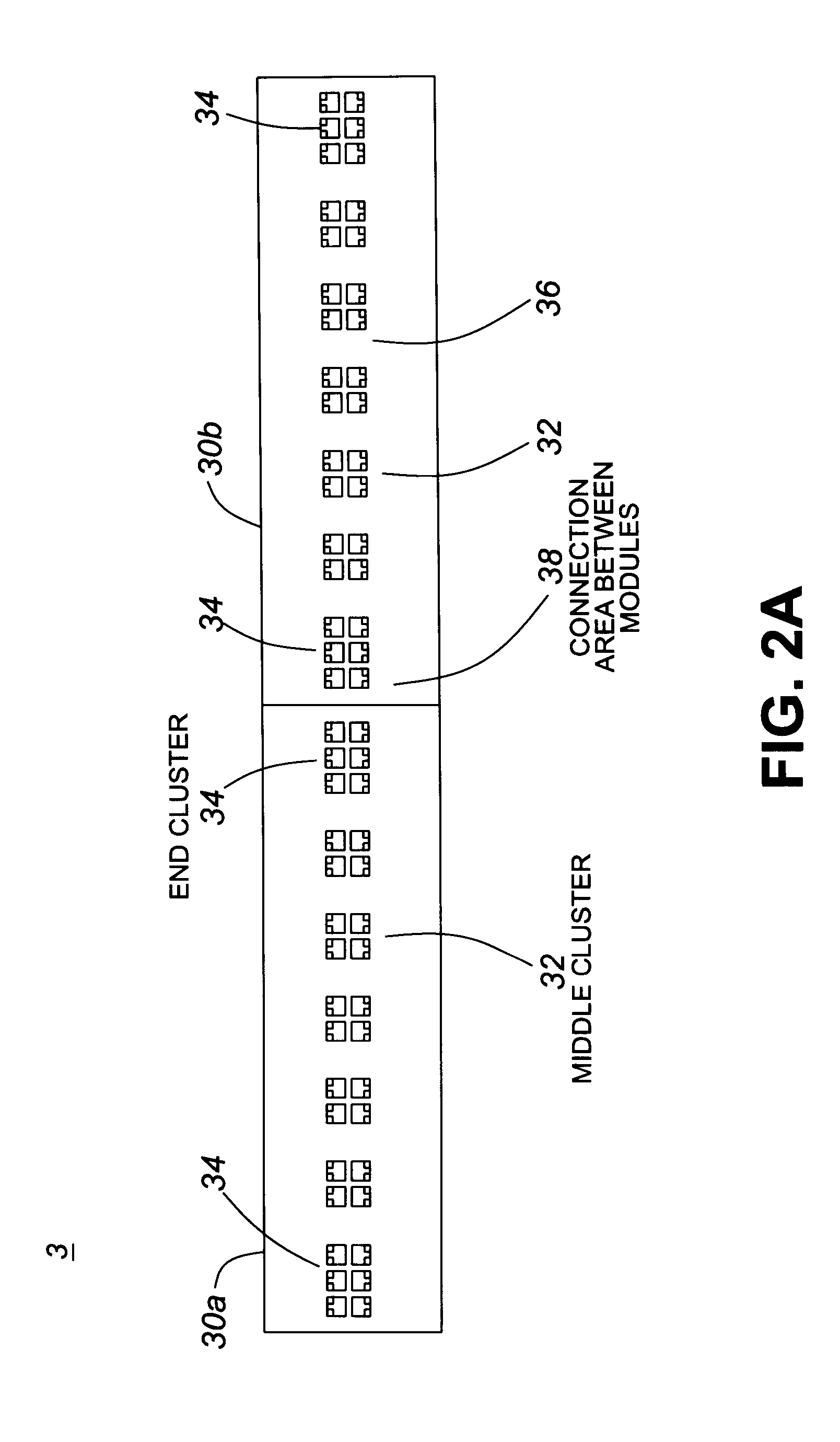Modular high density LED array light sources
a technology of led array light source and module, which is applied in the direction of printing, electrical equipment, lighting and heating apparatus, etc., can solve the problems of imposing constraints on system design, high amount of heat irradiated by gas discharge lamps, and often considered the most challenging combination of print quality and speed
- Summary
- Abstract
- Description
- Claims
- Application Information
AI Technical Summary
Benefits of technology
Problems solved by technology
Method used
Image
Examples
Embodiment Construction
[0066]A conventional LED light source assembly comprising a plurality of off-the-shelf individually packaged LED elements or die 12, arranged uniformly in a linear array is shown schematically in FIG. 1A. For high intensity light source arrays, the die 12 are preferably closely spaced and packed as densely as possible, i.e. spaced by a distance z. However, the substrate 14 and individual packaging of each die 12 extends a distance y around each LED element, limiting the packing density of the die. To allow for a higher packing density, several die 12 may be mounted on a common substrate 14, to form an array module, e.g. module 10a, as shown in FIG. 1B. As shown schematically in FIG. 1B, a conventional modular LED die array light source 1 may comprise two or more LED modules 10a, 10b each comprising a plurality of LED die 12, in this case a 1×5 array, arranged uniformly in a linear array on a substrate 14. Correspondingly, a square or rectangular array 2 may be provided as shown sche...
PUM
 Login to View More
Login to View More Abstract
Description
Claims
Application Information
 Login to View More
Login to View More - R&D
- Intellectual Property
- Life Sciences
- Materials
- Tech Scout
- Unparalleled Data Quality
- Higher Quality Content
- 60% Fewer Hallucinations
Browse by: Latest US Patents, China's latest patents, Technical Efficacy Thesaurus, Application Domain, Technology Topic, Popular Technical Reports.
© 2025 PatSnap. All rights reserved.Legal|Privacy policy|Modern Slavery Act Transparency Statement|Sitemap|About US| Contact US: help@patsnap.com



